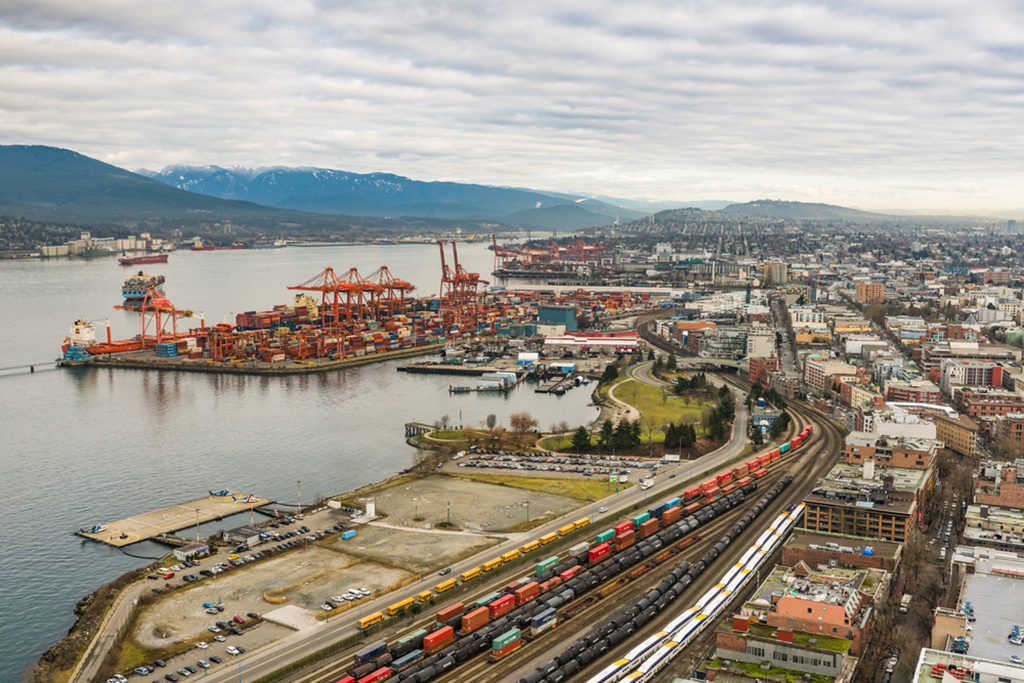Here’s a problem with carbon taxes, one often cited by industry. Introduce a high price on emissions, critics say, and the heavily polluting industries pack up and move to countries where there’s less regulation. Canada ends up importing their products — and indirectly supporting higher emissions.
This problem is called leakage, as companies leave to avoid carbon taxes. And it’s one the federal government is following closely as it ramps up its national carbon pricing system.
Enter the concept of border carbon adjustment. It’s a simple enough solution on paper: levy duties on imported products to ensure they effectively pay the same price for carbon emissions as Canadian producers do. Essentially, it’s a carbon tariff.
Aaron Cosbey, senior associate at the International Institute for Sustainable Development, says a carbon tariff takes away the incentive to move to less regulated areas and encourages polluting industries to cut emissions to avoid carbon taxes.
Cosbey is the co-author of a recent institute report that explored what a Canadian border carbon adjustment system could look like.
But before we can get to carbon tariffs, we need to explain Canada’s domestic carbon tax policy.
Canada doesn’t have a federal carbon tax, but it did introduce a benchmark for carbon pricing and a carbon tax on fuel in 2019.
Each province and territory can create its own carbon pricing regime, as long as the amount charged exceeds the national benchmark of $40 per tonne in 2021.
News about the benchmark was largely ignored in British Columbia, because the province has had a carbon tax since 2008. (In other provinces, the federal benchmark was big news. Alberta, Ontario and Saskatchewan unsuccessfully challenged the program in court.)
B.C.’s carbon tax is $45 per tonne of carbon dioxide and will increase to $50 on April 1.
That’s set to sharply rise over the next decade. In December, the federal government said it will increase the federal carbon tax on fuels to $170 per tonne by 2030. The tax will go up from $50 per tonne in 2022 by $15 per year from 2023 to 2030.
Putting a price on carbon can help governments recoup the cost of CO2 emissions (like funding fire crews) and incentivizes emitters to decarbonize to save money.
The risk of leakage happens when the price on carbon gets high enough that it stops incentivizing producers to reduce their CO2 emissions and starts to encourage them to pack up and move their business to a country with lower carbon taxes, Cosbey says.
Current carbon taxes aren’t likely to create leakage, he says, but adds that will change as Canada moves towards $170 per tonne.
“Our domestic industries are going to be feeling the pain, and we have to protect those industries so that we’re actually decarbonizing instead of just de-industrializing,” he says.
Pain from the provincial carbon tax and lost business due to leakage has been felt by B.C.’s cement industry for over a decade, says Michael McSweeney, president of the Cement Association of Canada.
Sweeney says when B.C. introduced the carbon tax, economists celebrated because some domestic carbon emissions dropped — but emissions only went down here because they leaked overseas.
The 2008 carbon tax, at $10 per tonne of CO2, rising by $5 every year to $30 per tonne in 2012, meant it was cheaper to buy cement from Asia and ship it to the Lower Mainland than it was to buy cement from local businesses, he says.
That boosted cement imports to 42 per cent from six per cent between 2006 and 2013, he says. Imported cement wasn’t charged carbon taxes or tariffs, and it boosted greenhouse gas emissions because it had to be shipped from Asia to North America, Sweeney says.
The carbon tax also hasn’t helped overall emissions go down — provincial emissions have gone up by four megatonnes since 2008, according to B.C.’s greenhouse gas emissions inventory.
In B.C., leakage meant local cement plants had to shut down for up to three months per year and lay off workers, he says. And it’s not as though a cement plant can pick up and move overseas.
Sweeney says it costs billions to build a plant and that investment is designed to pay off after over 100 years of operations. Most B.C. plants have been in operation for a quarter of that time, he says.
“Maybe some businesses can pick up and go but we can’t, we’re bricks and mortar,” he says.
Sweeney says he’s advocated for a border carbon adjustment at the provincial and national level for over a decade, and that it’s needed to meaningfully reduce CO2 emissions.
Canada’s approach lets provinces create their own carbon pricing systems, but carbon tariffs — affecting international trade — would have to come from the federal government.
Cosbey’s report outlines two potential border carbon adjustment systems: one that would work with Canada’s current carbon-pricing system, and one that would work with a hypothetical national carbon tax. Both would impose duties or tariffs to cover the carbon emissions created in producing the imported products. But only a tax-based system would be able to offer carbon tax rebates on exported products, which would help Canadian producers.
Cosbey says the report examines both options because Canada will have to switch from the current system to a national carbon tax if it’s serious about its goal of net-zero emissions by 2050.
Under the current carbon pricing system, certain industries have a set allowable amount of emissions they can emit before they have to start paying the carbon tax.
“You can’t continue to give free allowances to current industries the way we do now under the pricing system — it just doesn’t give them enough incentive to make investments in low-carbon technology,” he says. “One way or another, they’re going to have to face a full carbon tax.”
A border carbon adjustment levy is a needed add-on to strong and meaningful domestic climate action, Cosbey says.
“The only time you need one of these mechanisms is if you do heavily tax somebody like the oil patch,” Cosbey says. “If you’re imposing on them a heavy carbon cost — $170 per tonne — then they need their foreign competitors to also feel the same pain. But that doesn’t mean they’re not still feeling the pain.”
Border carbon adjustments are becoming a hot topic in Canada and globally.
Deputy Prime Minister Chrystia Freeland recently tweeted about discussing them with the European Union’s commissioner for the economy, and the EU just announced its own Carbon Border Adjustment Mechanism last week.
.@PaoloGentiloni and I had a great conversation today on carbon border adjustment, green bonds, and Canada and the EU’s strong economic partnership. We stand together as allies in both trade #CETA and the fight against climate change. pic.twitter.com/LoY5RKKeVl
— Chrystia Freeland (@cafreeland) July 10, 2021
The impacts of climate change are being felt around the world, which is creating political pressure to make meaningful climate action, Cosbey says.
“Climate ambition is actually starting to get really ambitious, instead of just words. And when that happens, you’ve got to think about these kinds of instruments,” he says.
Cosbey estimates that Canada will release a border carbon adjustment consultation plan by the end of September, unless a federal election gets called and delays action.
But Canada’s large, loud southern neighbour could impact the pace of a carbon-tariff rollout.
The U.S. is Canada’s largest trading partner and would likely respond aggressively if Canada introduced a border carbon adjustment levy on its own, Cosbey says.
Cosbey says the U.S. is working on creating a carbon tax, but from what he’s seen it won’t be a program that could synchronize with Canada’s current regulations — meaning the two countries couldn’t create a single harmonized border carbon adjustment system.
But there’s strength in numbers, and Canada wouldn’t be alone as the EU has already taken the first steps, he says.
When Finance Canada was contacted for comment, a ministry official pointed to the government’s 2021 budget commitment to launch a border carbon adjustment consultation process with the provinces, territories and importers and exporters over the summer. The budget says public consultations will start in the fall.
McSweeney says his cement association is involved in these consultations and is advocating for the government to introduce a border carbon adjustment.
Metro Vancouver is also advocating for the introduction of a border carbon adjustment in its draft Clean Air Plan, published in the spring.
John Lindner, Metro Vancouver air quality planner, said it’s important to reduce emissions, not just transfer them to another country.
“We want strong industrial facilities that are deploying innovative climate solutions — a carbon tariff would help that, help industry stay here and compete fairly,” Lindner says. ![]()
Read more: Energy, Environment
















Tyee Commenting Guidelines
Comments that violate guidelines risk being deleted, and violations may result in a temporary or permanent user ban. Maintain the spirit of good conversation to stay in the discussion.
*Please note The Tyee is not a forum for spreading misinformation about COVID-19, denying its existence or minimizing its risk to public health.
Do:
Do not: